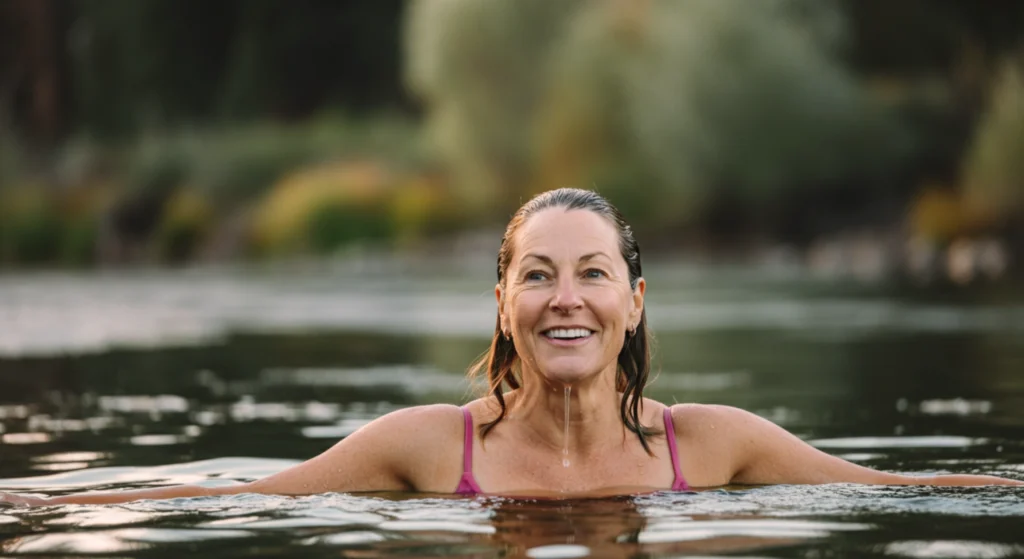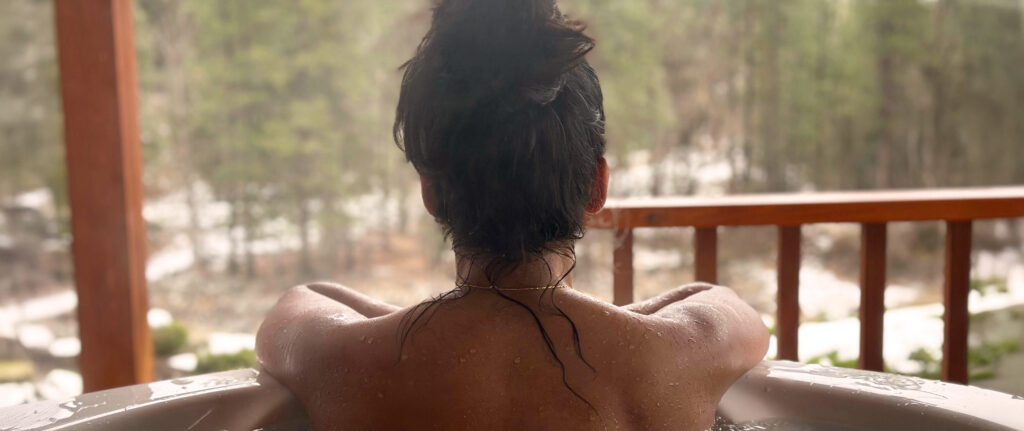Some days, stepping into cold water feels energizing. Every cell wakes up and you feel ready for anything. Other days, you dip a toe in and your whole body says no. That’s not inconsistency. It’s your physiology doing exactly what it’s designed to do. Women’s bodies change throughout the month and across life stages, and those changes shape how heat, cold, and recovery feel. We’re focusing here on female physiology — though anyone who experiences cyclical hormonal changes may notice similar patterns.
For decades, most research on recovery practices, including contrast therapy, has been conducted primarily on men. The same is true across much of medicine. Everything from exercise physiology to drug dosage recommendations has historically been based on male bodies. Women’s hormonal cycles, shifting temperature regulation, and unique stress responses were often treated as “complicating variables”, rather than essential parts of the picture. The result is that most standard advice isn’t designed with women in mind.
Hormones Change How You Experience Temperature
Estrogen and progesterone fluctuate in predictable cycles, and those changes influence everything from blood flow to core body temperature. Research has shown that hormonal changes directly affect thermoregulation, and that vascular responses to cold differ across the menstrual cycle. That’s why what feels easy one week might feel intense the next.
Here’s how those shifts often show up:
- Menstrual and early follicular: Hormones are low, and so is your core temperature. Cold can feel sharper. You may also feel more tired or notice a bigger appetite as your body replenishes. Shorter plunges and more time in warmth, along with rest and good nutrition, often feel best.
- Late follicular and ovulatory: Estrogen peaks and energy tends to rise. Cold exposure can feel invigorating and you may tolerate longer sessions.
- Luteal: Progesterone raises baseline temperature and increases sensitivity to extremes. Energy often dips and cravings for comfort food increase. Shorter cold exposure and longer warm recovery usually feel better here.
These aren’t rules. They’re patterns. Paying attention to them and adjusting how you practice turns contrast therapy from a one-size-fits-all protocol into something more personal and sustainable.
Perimenopause and Menopause: A New Landscape
If the menstrual cycle is a monthly rhythm, menopause is a complete change of season. As estrogen declines, the body’s internal thermostat becomes less stable, which is why hot flashes, night sweats, and sudden chills are common. These shifts are part of the transition, not a sign something’s wrong.
Stress, Sensitivity, and Nervous System Support
Women’s nervous systems are often more reactive to stress. That’s not a weakness — it’s part of how the body is wired — but it means stress responses can become overactive more easily. Cold exposure is one way to help regulate that system.
When you enter cold water, the sympathetic nervous system (“fight or flight”) activates. As you breathe and settle, the parasympathetic system (“rest and digest”) takes over. This back-and-forth builds resilience. Over time, it’s linked to steadier moods, improved emotional regulation, and a calmer baseline. Evidence suggests that sex and hormonal status influence stress regulation, and that repeated cold exposure can improve autonomic balance and mood.
Letting the Practice Evolve With You
Your physiology in your 20s isn’t the same as in your 40s or 60s. Your approach to contrast therapy shouldn’t be either.
- During cycling years: Notice how temperature tolerance, appetite, and energy shift. If you’re tired or hungrier, consider shorter sessions or pairing them with a nourishing meal.
- Perimenopause: Consistency matters more than intensity. Short, regular sessions can help stabilize temperature regulation and mood.
- Post-menopause: Contrast therapy can support vascular health, mood, and thermoregulation. Staying hydrated, eating balanced meals, and recovering well help the body adapt to temperature stress. Research shows that cardiovascular risk increases after menopause, which makes recovery practices like this even more valuable.
And through it all: listen. If cold feels too sharp, shorten it. If warmth is what your body is craving, stay there longer. If rest feels like the right call, honor that. There’s no badge for suffering. There’s wisdom in listening.
Water as Teacher
Contrast therapy isn’t about testing your limits. It’s about building a relationship with your body, the elements, and the natural shifts that define a woman’s life. The changes you feel aren’t obstacles to overcome. They’re messages. They’re information. And when you respond to them, the practice stops being about what you should do and becomes about what actually supports you — right now, in this body, in this season.
Join the Conversation
Want to share your cold plunge experience? Tag us on social @fluxloungebend and use #ColdPlunge #ContrastTherapy #HotColdImmersion #WellnessJourney #Recovery #BendOregon #FluxLounge.



